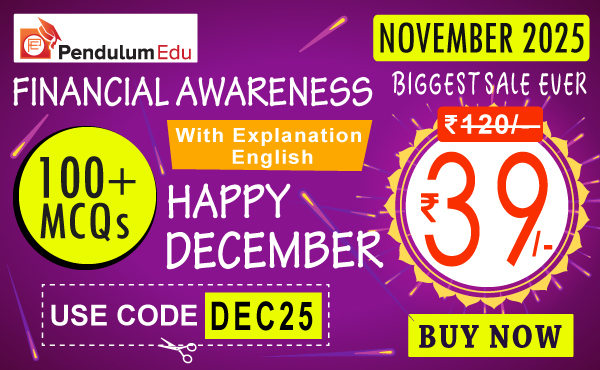Topic: Indian Economy
1. RBI became second largest buyer of gold in 2021.
- RBI has become the second-largest buyer of gold among the world’s Central Banks in 2021.
- Central Bank of Thailand was the largest buyer of gold in 2021. It bought 90 metric tonnes of gold.
- RBI bought 77.5 metric tonnes of gold in 2021. This is the second-highest ever buying after 2009. In 2009, RBI had bought 200 metric tonnes from the International Monetary Fund.
- RBI’s total gold reserves reached 754.1 tonnes at the end of December 2021. This amounts to 6.22% of India’s forex reserves.
- As per RBI data, India’s total reserve stood at $633.61 billion at the end of December 31, 2021.
- As per Goldhub, India’s official gold reserves is the ninth-largest in the world. Goldhub is the official website of the World Gold Council.
- As per RBI, total forex reserves were $576.98 billion at the end of March 2021. Out of this, $536.6 billion were held as foreign currency assets (FCA).
- Most of India’s FCA are in U.S. treasury bills and U.S. treasury bonds. Fall in value of fiat currency such as US dollar or Euro can be countered by increasing gold reserves.
- Buying more gold would help RBI in handling the global inflationary environment and fall in value U.S. dollar.
Topic: Reports and Indices
2. Comscore report shows Paytm’s penetration in Fintech space is highest.
- According to the Comscore report, Paytm’s penetration in the Fintech space is highest at more than 45%.
- The report shows that Google Pay closely follows Paytm in terms of penetration in the Fintech space.
- As per the report, Google Pay’s penetration in the Fintech space is 43%.
- As per the Comscore report, financial services account for 80% of the total internet audience in the country.
Topic: Banking/Financial Schemes
3. The schemes for on-tap liquidity for emergency health services and contact-intensive sectors extended.
- The schemes for on-tap liquidity for emergency health services and contact-intensive sectors have been extended by RBI by another 3 months till June 30.
- The two schemes have been extended from March 31, 2022, to June 30, 2022.
- RBI had announced on-tap liquidity facilities of ₹ 50,000 crore and ₹ 15,000 crore for emergency health services and contact-intensive sectors, respectively.
- Banks are incentivised for credit delivery under the scheme by way of extension of priority sector classification to such lending. Banks were to create a Covid loan book under the scheme.
Topic: RBI
4. NACH mandate limit for Trade Receivables Discounting System (TReDS) settlements to be increased.
- National Automated Clearing House (NACH) mandate limit for TReDS settlements would be increased to ₹3 crore.
- This announcement was recently made by RBI governor Shaktikanta Das in his statement after the Monetary Policy meeting.
- The present NACH mandate is capped at ₹1 crore. Transactions in TReDS are settled through the NACH system.
- RBI had introduced the ‘on-tap’ authorisation of TReDS operators in October 2019.
- MSMEs will benefit from the increased limit. Earlier, they were required to create many invoices as the value of each invoice was capped at Rs 1 crore.
- Trade Receivables Discounting System (TReDS) is an electronic platform that facilitates the financing of trade receivables of MSMEs.
Topic: RBI
5. The limit of e-RUPI vouchers to be increased to ₹1,00,000 per voucher.
- The limit of e-RUPI vouchers issued by the Central government and State governments will be increased from ₹10,000 to ₹1,00,000 per voucher as per the announcement made by RBI governor.
- RBI governor said e-RUPI vouchers issued by the Central government and State governments will be permitted to be used more than once until the amount of voucher is completely redeemed.
- e-RUPI prepaid digital voucher was launched in August 2021 and runs on the UPI platform. It was developed by the National Payments Corporation of India (NPCI).
- It is a person-specific and purpose-specific cashless voucher. It can be used by individuals, corporates or governments. It is presently used largely for Covid vaccination purposes.
Topic: RBI
6. Monetary Policy Committee unanimously votes to keep repo rate unchanged.
- Monetary Policy Committee (MPC) has unanimously voted to keep repo rate unchanged at 4%.
- MPC has voted by a 5-1 majority to continue with the accommodative monetary policy stance.
- RBI has kept the reverse repo rate unchanged at 3.35%. RBI has projected retail inflation for 2022-23 at 4.5%.
- RBI retained its inflation projection at 5.3% for the current financial year.
- Due to the rise in food prices, retail inflation increased to a five-month high of 5.59% in December from 4.91% in November.
- RBI has kept the real GDP growth projection at 7.8% for FY23. Economic Survey has projected real GDP growth at 8-8.5%.
Topic: Appointments
7. Sanjay Malhotra is appointed new DFS secretary.
- Sanjay Malhotra has been appointed as Secretary, Department of Financial Services (DFS).
- Before being appointed as DFS secretary, Malhotra was Chairman and Managing Director of REC Ltd. He is a 1990 batch IAS officer of Rajasthan cadre.
- The entire banking system comes under the Secretary, Department of Financial Services (DFS).
- Malhotra has succeeded Debashish Panda. Panda recently completed his term as Secretary, Department of Financial Services (DFS) on January 31.
Topic: Miscellaneous
8. Financial Literacy Week 2022 to be observed from February 14, 2022 to February 18, 2022.
- National Centre for Financial Education (NCFE) will observe Financial Literacy Week 2022 from February 14, 2022 to February 18, 2022.
- The theme for Financial Literacy Week 2022 is “Go Digital - Go Secure". Digital Financial Services Day will be on February 18, 2022.
- RBI had observed Financial Literacy Week 2021 from February 08-12, 2021 on the theme of "Credit Discipline and Credit from Formal Institutions".
- RBI has been organizing Financial Literacy Week (FLW) every year since 2016.
- NCFE is a Section 8 (Not for Profit) Company promoted by RBI, SEBI, Insurance Regulatory and Development Authority of India (IRDAI) and Pension Fund Regulatory and Development Authority (PFRDA).
Topic: Agriculture
9. India’s milk production increased by 35.04% during 2015-16 to 2020-21.
- India’s milk production has increased by 35.04% during 2015-16 to 2020-21.
- India’s milk production increased from 155 mt in 2015-16 to 210 mt in 2020-21.
- Karnataka’s milk production has increased by 72.39% from 6.3 mt in 2015-16 to 10.9 mt in 2020-21.
- Uttar Pradesh is the top producer of milk. Its production declined by 1.58% over 2019-20. Its production increased by 18.84% during the period between 2015-16 and 2020-21.
- The milk production in the states declined in Andhra Pradesh, Haryana, Uttarakhand, Arunachal Pradesh, Manipur and Sikkim in 2020-21 in comparison to 2019-20.
Topic: Agriculture
10. Three states account for nearly half of India’s demand for chemical pesticides in 2020-21.
- Maharashtra, Uttar Pradesh and Telangana account for nearly half of India’s demand for chemical pesticides in 2020-21.
- Maharashtra alone contributed nearly one-fifth of India’s demand for chemical pesticides in 2020-21.
- The demand for chemical pesticides all over India has reduced from 73,244 tonnes in 2018-19 to 70,668 tonnes in 2020-21.
- The production of key chemical pesticides in India increased by 33.02% in 2020-21.
- The share of pesticide mancozeb was highest among the pesticides produced in the country. Production of another key pesticide (acephate and 2, 4-D) also increased.
 Previous
Previous 
 Latest
Latest 








Comments